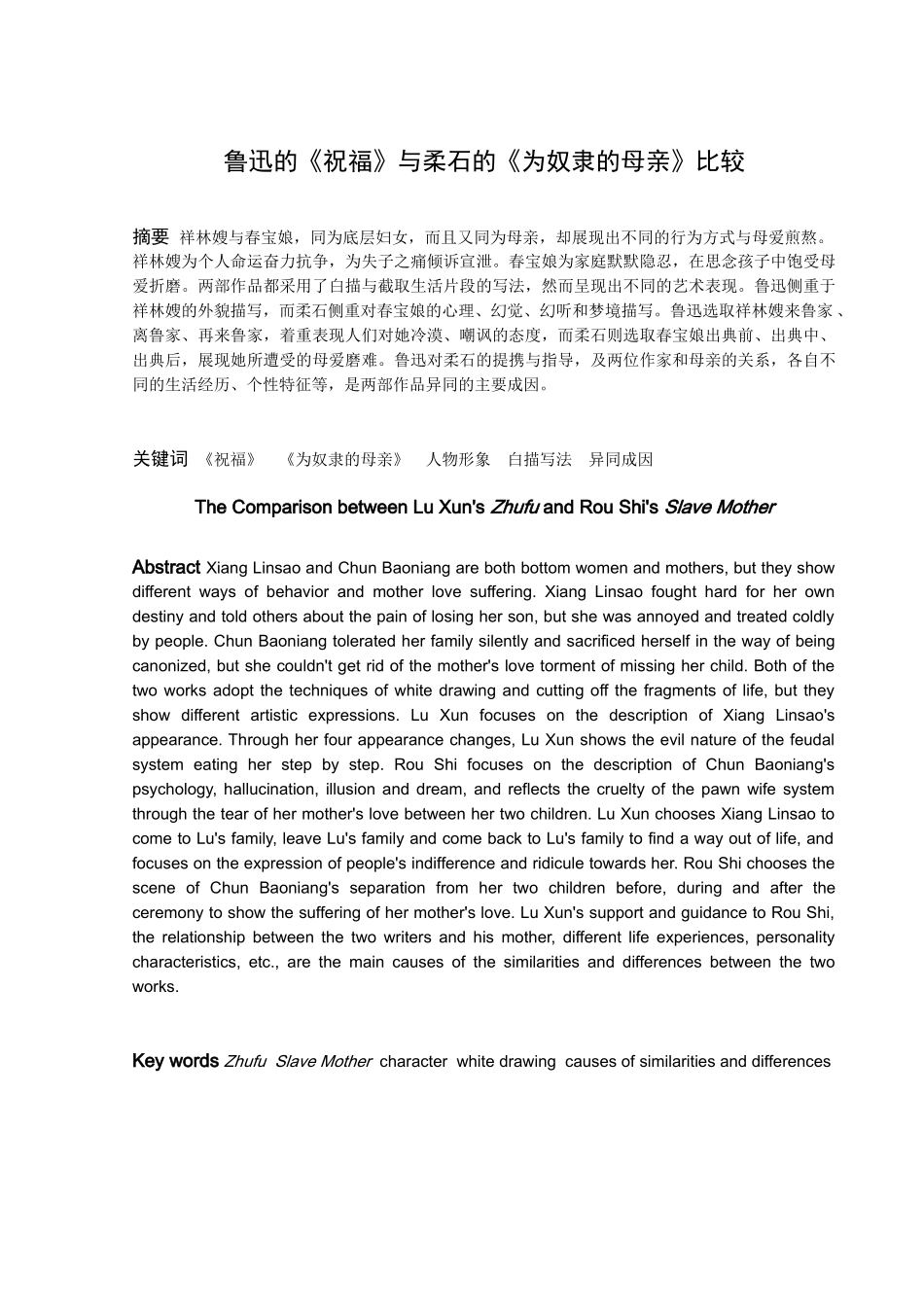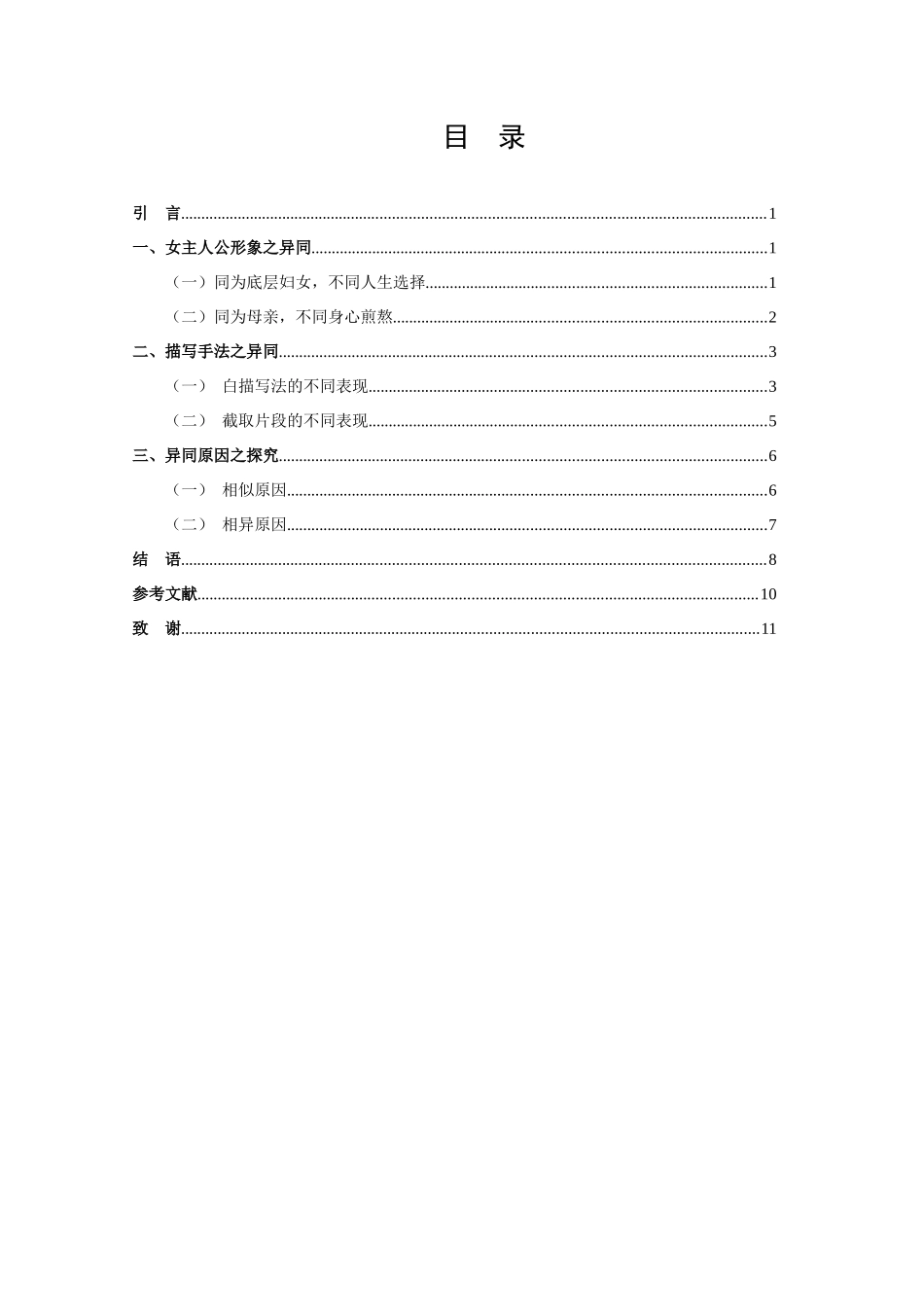鲁迅的《祝福》与柔石的《为奴隶的母亲》比较摘要 祥林嫂与春宝娘,同为底层妇女,而且又同为母亲,却展现出不同的行为方式与母爱煎熬。祥林嫂为个人命运奋力抗争,为失子之痛倾诉宣泄。春宝娘为家庭默默隐忍,在思念孩子中饱受母爱折磨。两部作品都采用了白描与截取生活片段的写法,然而呈现出不同的艺术表现。鲁迅侧重于祥林嫂的外貌描写,而柔石侧重对春宝娘的心理、幻觉、幻听和梦境描写。鲁迅选取祥林嫂来鲁家 、离鲁家、再来鲁家,着重表现人们对她冷漠、嘲讽的态度,而柔石则选取春宝娘出典前、出典中、出典后,展现她所遭受的母爱磨难。鲁迅对柔石的提携与指导,及两位作家和母亲的关系,各自不同的生活经历、个性特征等,是两部作品异同的主要成因。关键词 《祝福》 《为奴隶的母亲》 人物形象 白描写法 异同成因The Comparison between Lu Xun's Zhufu and Rou Shi's Slave MotherAbstract Xiang Linsao and Chun Baoniang are both bottom women and mothers, but they show different ways of behavior and mother love suffering. Xiang Linsao fought hard for her own destiny and told others about the pain of losing her son, but she was annoyed and treated coldly by people. Chun Baoniang tolerated her family silently and sacrificed herself in the way of being canonized, but she couldn't get rid of the mother's love torment of missing her child. Both of the two works adopt the techniques of white drawing and cutting off the fragments of life, but they show different artistic expressions. Lu Xun focuses on the description of Xiang Linsao's appearance. Through her four appearance changes, Lu Xun shows the evil nature of the feudal system eating her step by step. Rou Shi focuses on the description of Chun Baoniang's psychology, hallucination, illusion and dream, and reflects the cruelty of the pawn wife system through the tear of her mother's love between her two children. Lu Xun chooses Xiang Linsao to come to Lu's family, leave Lu's family...


